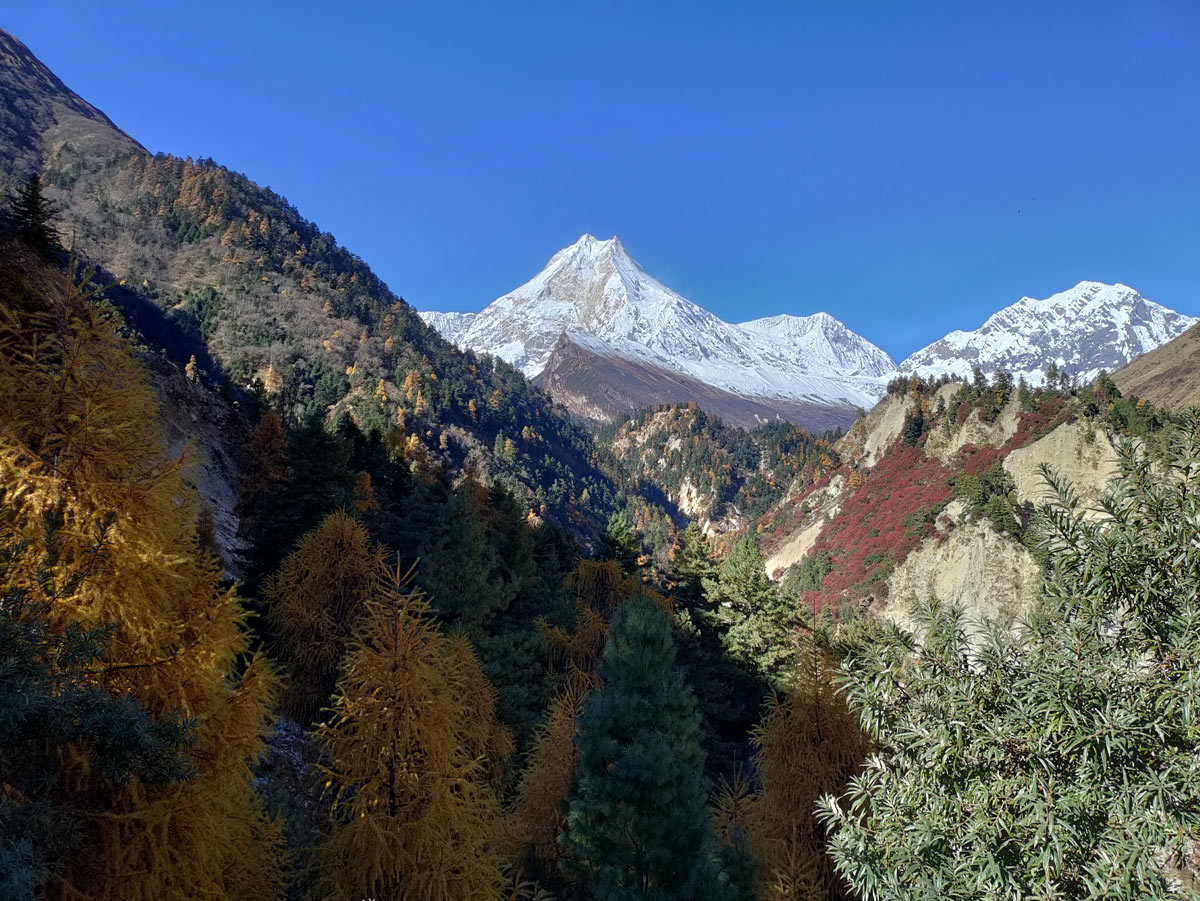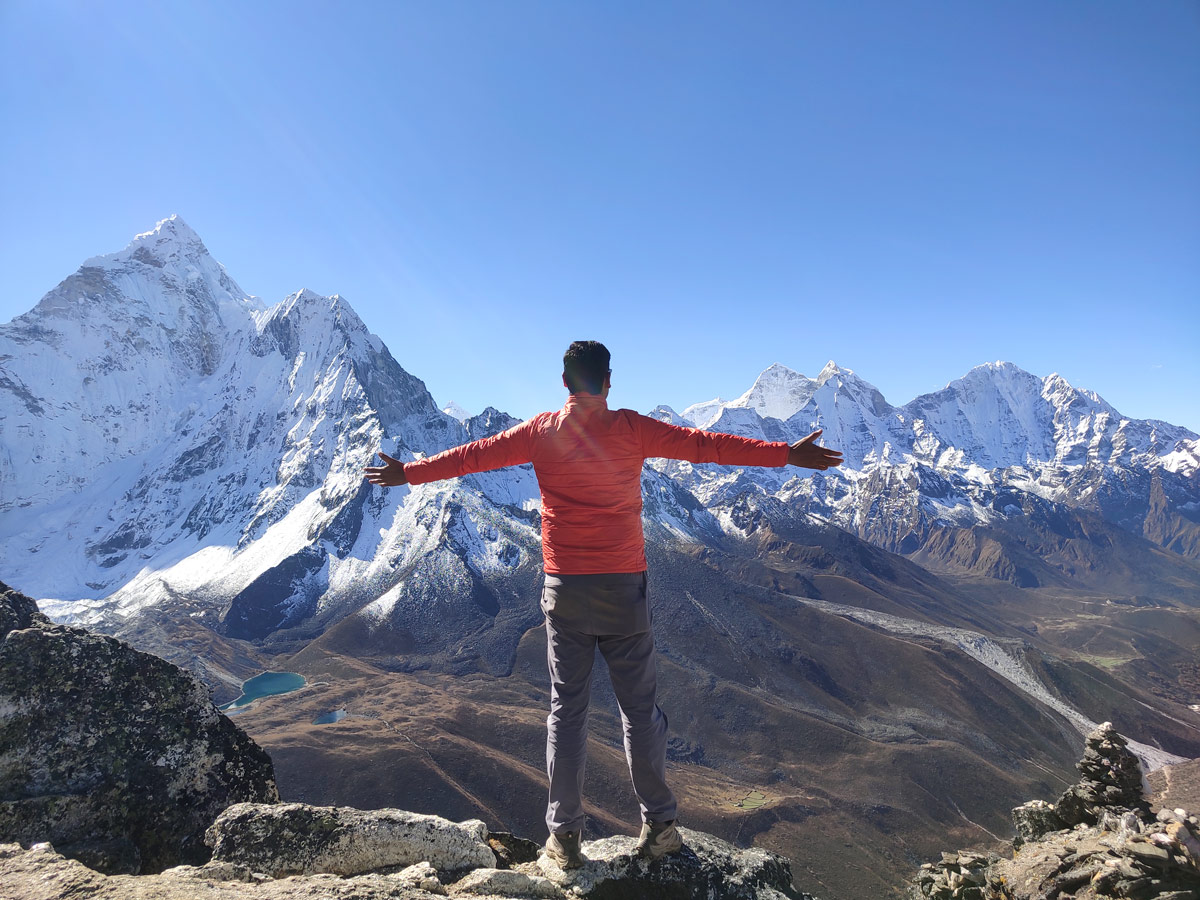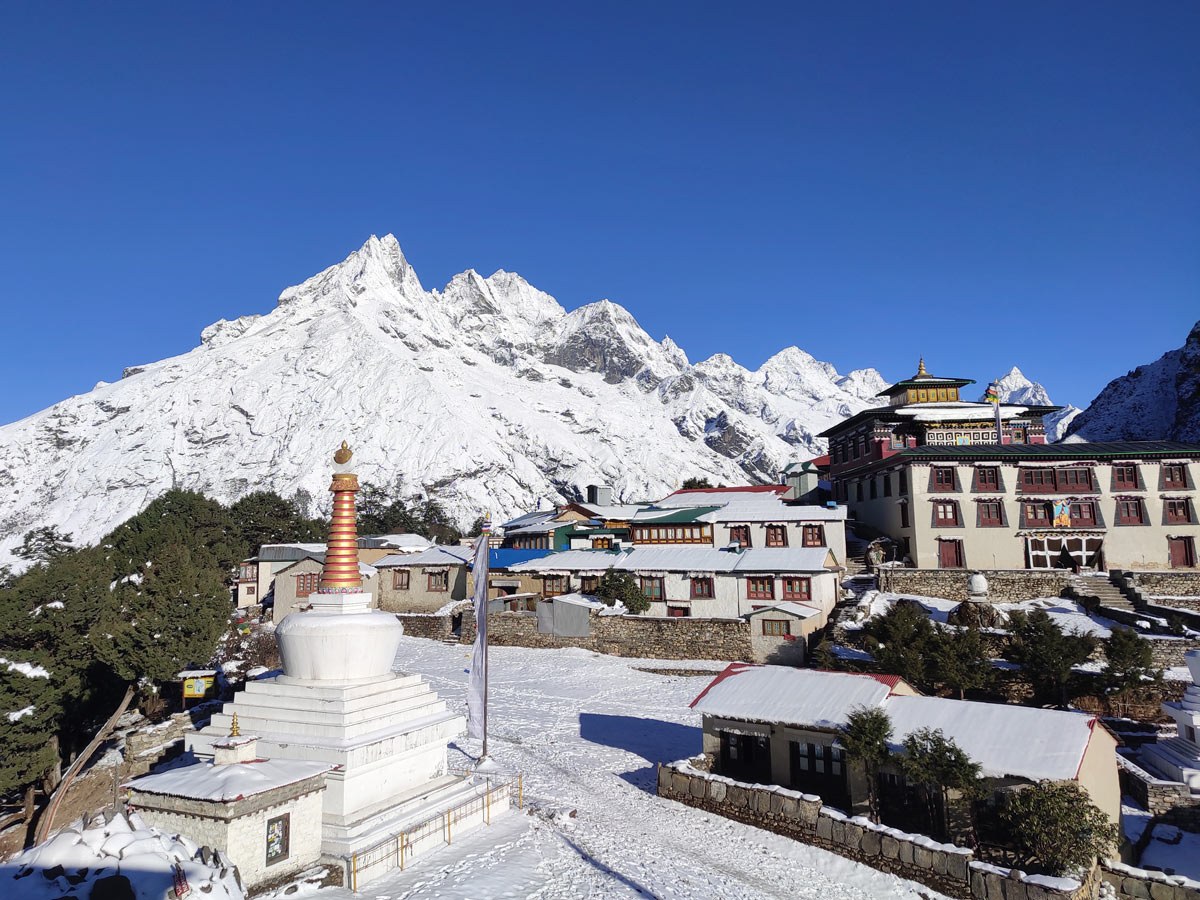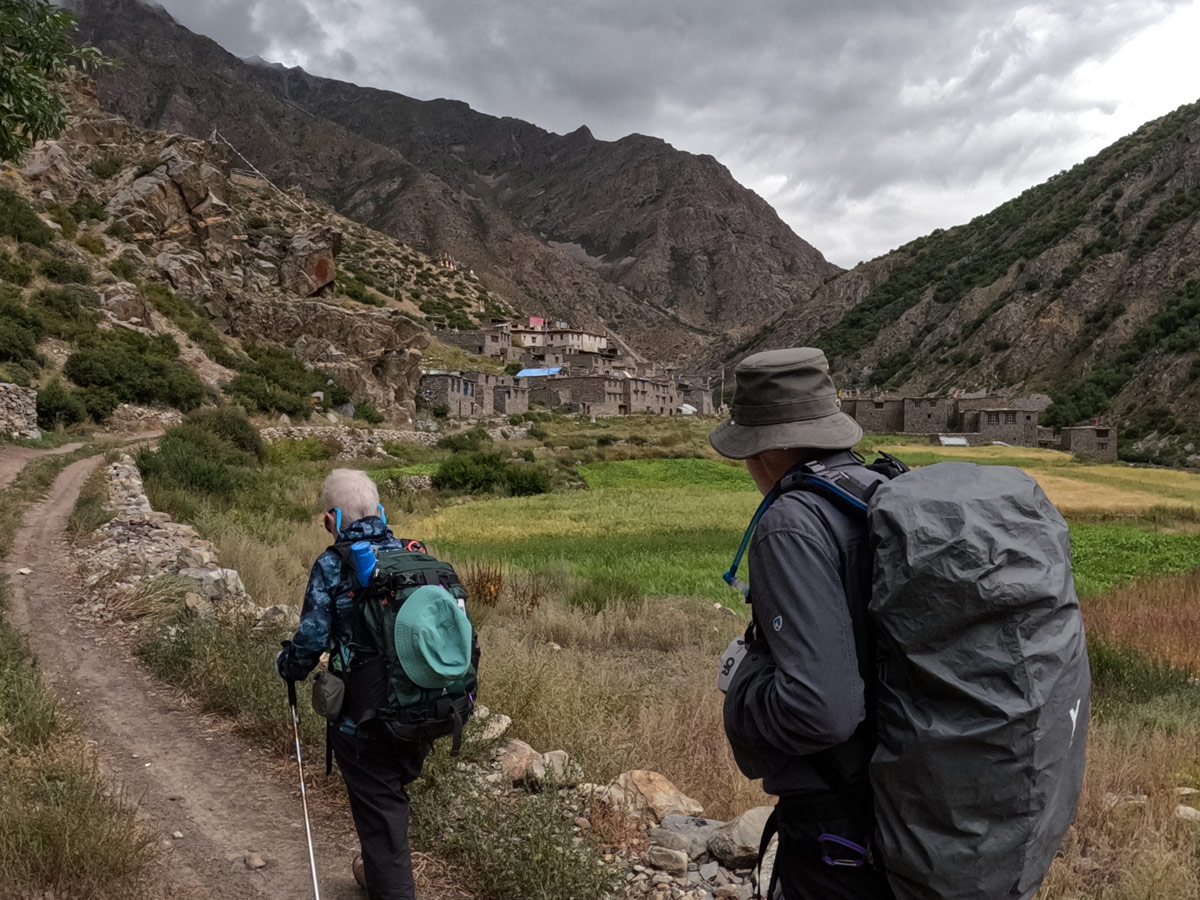The land of the Himalayas, Nepal features immense richness when it comes to natural heritage.
While it is due to the geography of the country, equal credit should be given to the conservation efforts taken by the government to provide sanctuary to wildlife and landscapes.
Between the towering peaks and the lowlands of Terai, Nepal features several areas conserved and reserved specifically for the protection of flora and fauna including national parks, conservation areas, and wildlife reserves.
Among that are the six conservation areas scattered in different regions of Nepal. Take a look at what each of these areas has to offer.
How many protected areas does Nepal have?
The protected areas in Nepal are mainly categorized into two types: conservation areas and national parks of Nepal.
However, with the unwavering dedication towards conserving the flora and fauna, Nepal’s approach is not limited to national parks and conservation areas. It also features wildlife reserves and a hunting reserve.
There are 12 national parks in Nepal along with 6 conservation areas, 1 wildlife reserve, and 1 hunting reserve.
Conservation Areas of Nepal
Nepal has dedicated conservation areas established to protect the biodiversity and natural heritages of the country, endangered and non-endangered alike.
These conservation areas are also a step towards ensuring safe and responsible tourism in several regions. There are six conservation areas in the country scattered in different regions with each having its purpose and functioning.
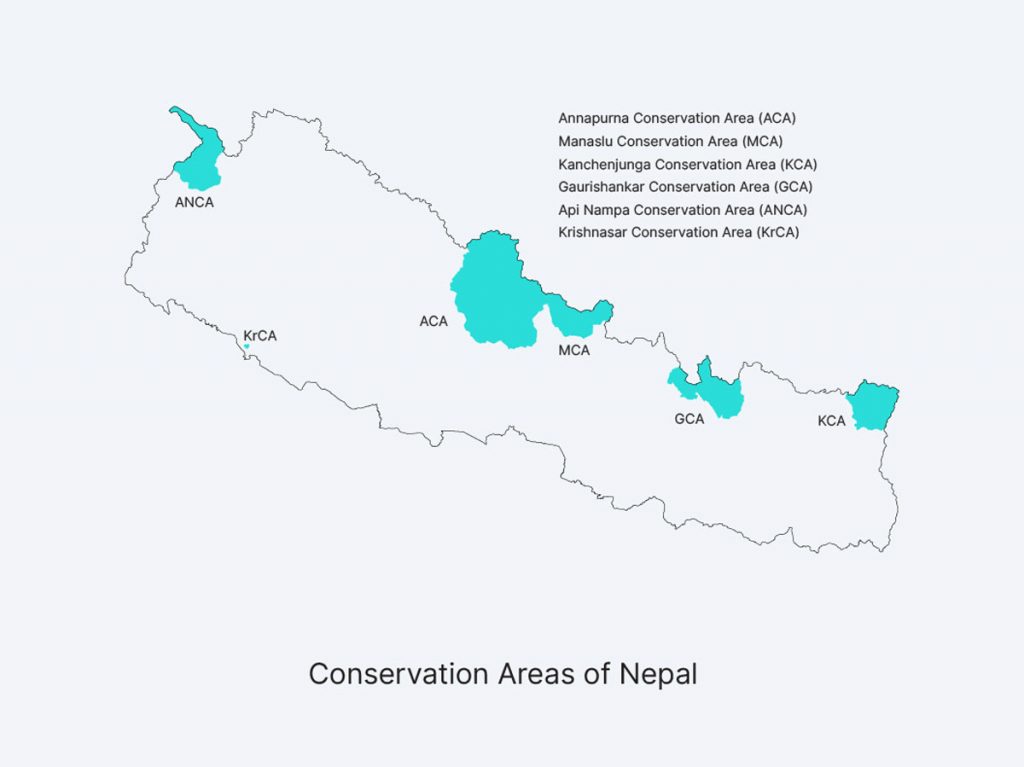
They are the Annapurna Conservation Area, Manaslu Conservation Area, Kanchenjunga Conservation Area, Gaurishankar Conservation Area, Api Nampa Conservation Area, and Krishnasaar Conservation Area.
Annapurna Conservation Area
The largest conservation area of Nepal, the Annapurna Conservation Area is located in the north-central part of Nepal and covers a massive area of 7,629 sq km.
It was established in 1992 and is home to some of the major attractions of the world.
It features the vast and diverse swath of the massive Annapurna range including some of the tallest peaks in the world like Annapurna I (8,091 m), Annapurna II (7,937 m), Annapurna III (7,555 m), and Dhaulagiri (8,167 m).
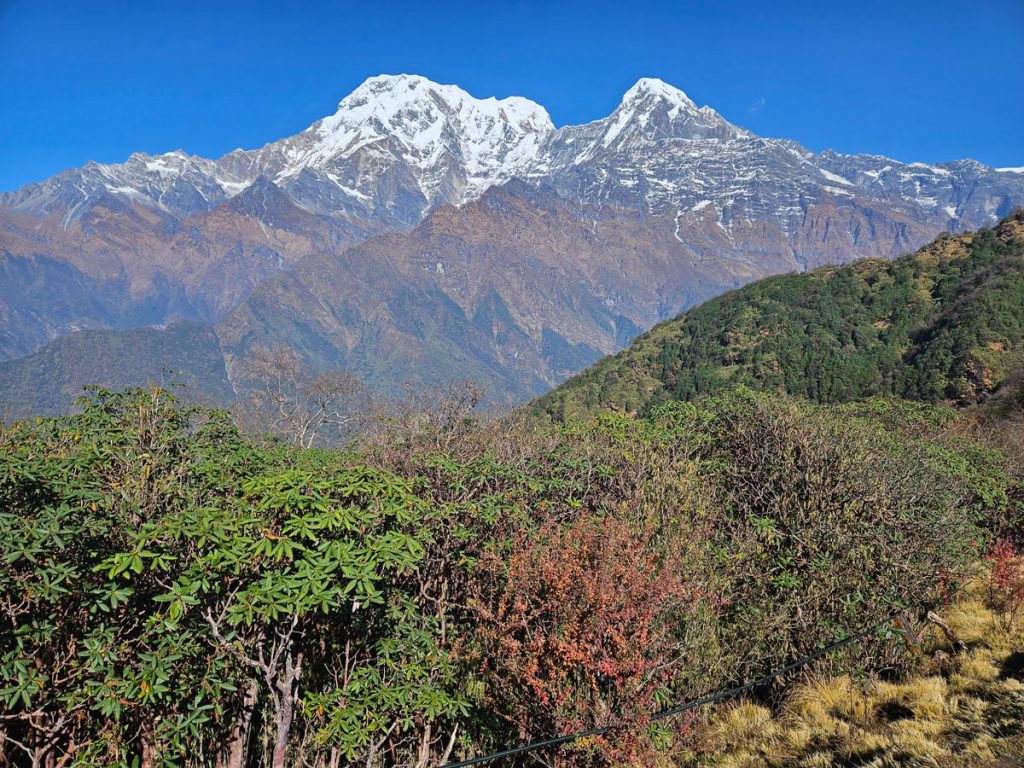
Besides these, the region is also home to other numerous peaks like Machhapuchhare (iconic fishtail, 6,993 m), Hiunchuli (6,441 m), Tilicho Peak (7,134 m), Gangapurna (7,455 m), Mardi Himal, and the likes of it.
Featuring a tapestry of landscapes from subtropical jungles to high-altitude deserts, this region features everything from lush forests and deep valleys to towering peaks and glaciers displaying the diversity of Nepal’s natural diversity.
It is the biological hotspot as it provides shelter to over 1200 plant species, 102 mammals, 474 birds, 39 reptiles, and 22 amphibians. Rhododendrons, orchids, snow leopards, Himalayan tahr, and Impeyan Pheasants are some of the common flora and fauna found here.
A world-famous trekking destination, the Annapurna Conservation Area also features iconic trekking routes like the Annapurna Base Camp trek, Annapurna Circuit trek, and the Ghorepani Poonhill trek facilitating all levels of trekkers.
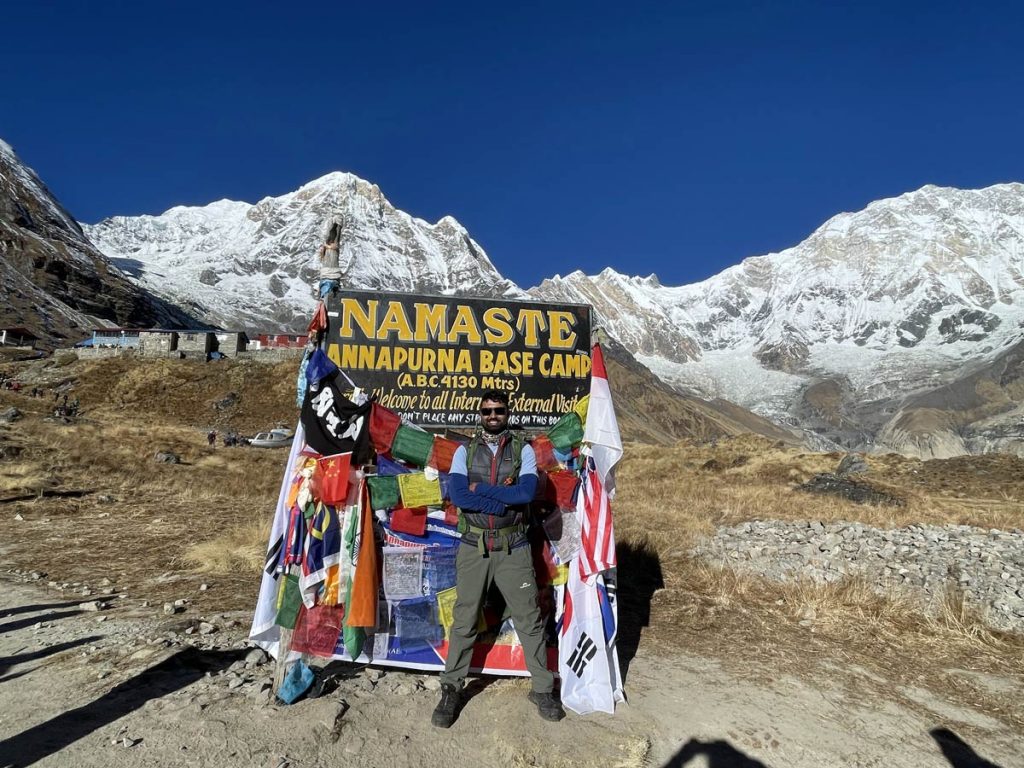
Some other combined treks are also available in this region like Nar Phu Valley with Annapurna Circuit, Tilicho lake with Thorong La Pass, and more.
The experience of trekkers is further enhanced by the unique high-altitude desert in Mustang valley as they traverse along the Marshyangdi River valley. This region is also home to the deepest valley in the world- the Kali Gandaki River valley.
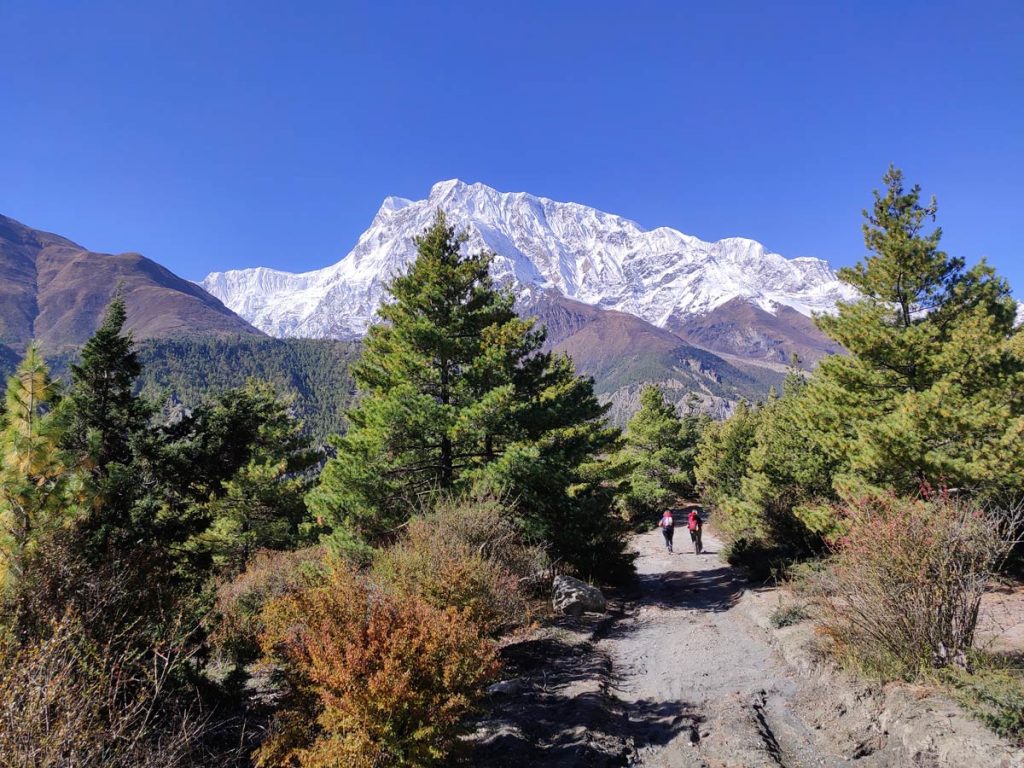
The trekkers, however, need to have an ACAP permit along with the general permits to explore this trekking paradise as a part of the Annapurna Conservation Area Project.
Besides being rich in natural beauty, the Annapurna Conservation Area is also a melting pot of culture as it is home to several ethnic groups like the Gurungs, Thakalis, Manangis, Magars, and more who are warm and welcoming towards the visitors.
Manaslu Conservation Area
Declared as a conservation area in 1998, the Manaslu Conservation Area covers an area of 1663 sq km including some parts of the Gorkha district in Nepal. It is home to the eighth-highest peak in the world- Mt. Manaslu standing at 8,163 m.
This area within the altitude range of 600 m to 8,163 m features six climatic zones: tropical, subtropical, temperate, subalpine, alpine, and arctic. Thanks to its bioclimatic diversity, this region harbors a mosaic of species.
The Manaslu Conservation Area inhabits 33 species of mammals, 110 species of birds, 2000 species of plants, 11 types of forests, 50 species of useful plants, 11 species of butterflies, and 3 species of reptiles.
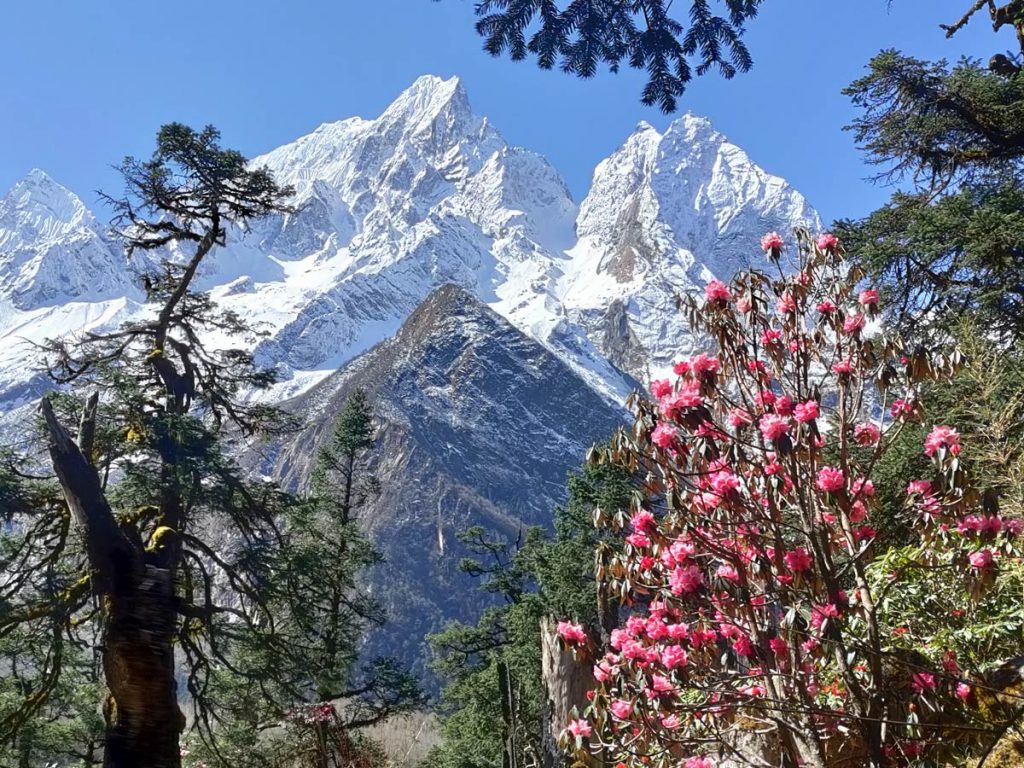
Besides Mt. Manaslu, the region is also home to other peaks like Samdo, Larkya Peak, Simnang Himal, Langbo Kangi, Chamar, Langju, and others.
As a testament to its natural richness, the area boasts populations of snow leopards, Himalayan tahrs, langur monkeys, Himalayan musk deer, and different birds like lammergier, bearded vulture, and more.
The region is highly influenced by Tibetan culture, especially at higher altitudes and Buddhism is highly prevalent here. Therefore, it is dotted with monasteries, prayer flags, and mani walls. This region also remains untouched by modernity hence people experience authentic Himalayan life here.
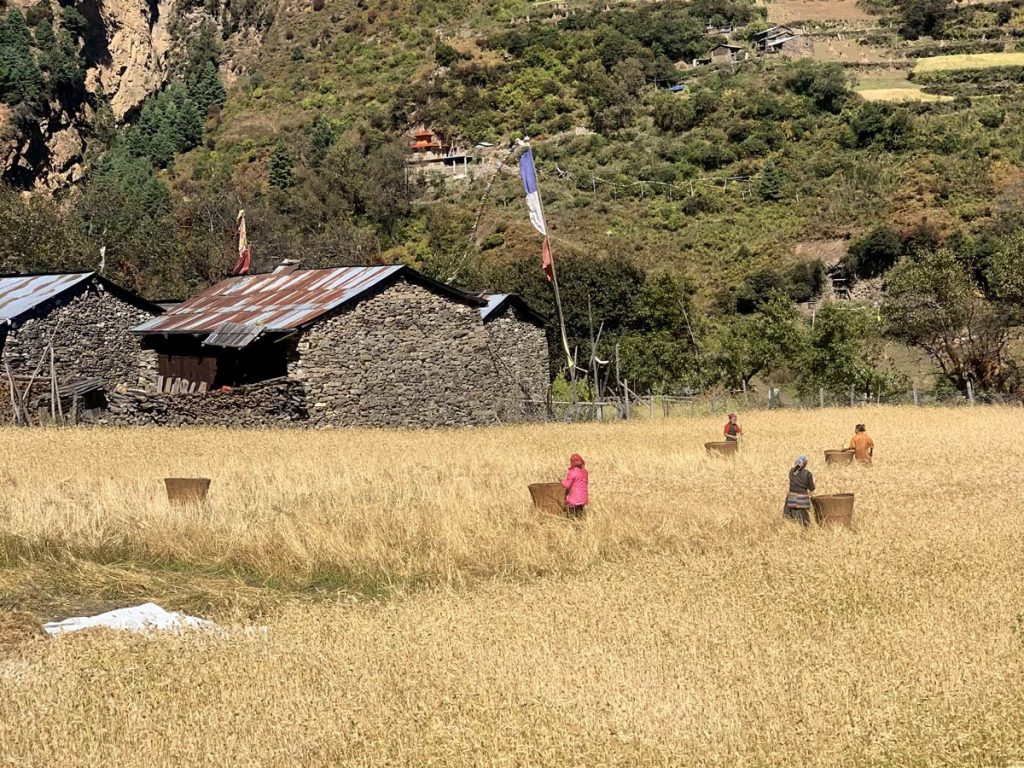
A diversity of cultures can be seen here starting from Brahmins at the lower altitude which transforms into Gurung, Tibetan, and Lama cultures as you explore the higher points of the Manaslu Conservation Area.
Often regarded as a hidden gem, this region also features an elaborate and rather authentic trek encircling Mt. Manaslu itself while providing the trekkers with an experience truly immersed in the natural and cultural heritage of the region.
While the Manaslu Circuit trek takes you to the challenging Larkya La pass meandering through the Budi Gandaki River valley, other treks are available in this region too like the Tsum Valley trek which explores the region from a different perspective.
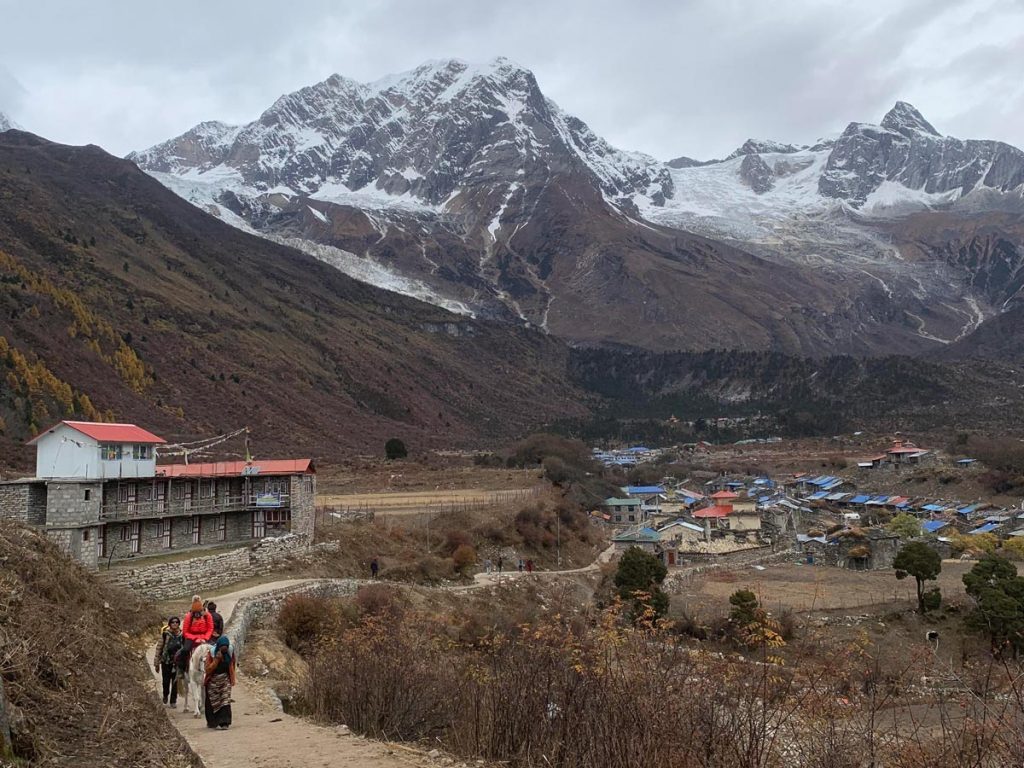
The region is however a restricted area to conserve its richness under the Manaslu Conservation Area Project. It means that the visitors will require a Restricted Area Permit along with the Manaslu Conservation Area Permit to explore the region.
Kanchenjunga Conservation Area
Kanchenjunga Conservation Area is a tapestry of nature and culture, and it covers an area of 2035 sq km in the far easter corner of Nepal in the Taplejung district. It was established in 1998.
This region is named after and home to the third highest peak in the world- Mt. Kanchenjunga (8,568 m). Besides this, it also houses many high mountains and glaciers including eleven 7000-ers.
Some of the other peaks in this region include Kangbachen (7,902 m), Kumbakarna (7,710 m), Gimmigela Chuli (7,350 m), and Drohmo Peak (6,881 m). Yalung Glacier (4,580 m) and Zemu Glacier are some of the common glaciers here.
The region also features several trekking routes catered for trekkers with different levels of experience. The most common trekking routes here are the Kanchenjunga Circuit trek and the Kanchenjunga Base Camp trek.
While the Kanchenjunga Circuit trek takes the visitors to both the north and south basecamp of the mountain, the Kanchenjunga Base Camp trek can be either south or north based on the one that you pick.
Other treks in the Kanchenjunga Conservation Area include the Arun Valley trek taking you to the most beautiful valley of Nepal and the Limbu Cultural Trail.
This region is also a restricted area and requires the trekkers to have a Restricted Area Permit along with the Kanchenjunga Conservation Area Permit for exploration.
The region is also a global hotspot for plant diversity featuring 23 species of rhododendrons amidst other various plants. It is also home to more than 250 species of endangered wildlife and birds.
Rare snow cock, Danphe, blue sheep, snow leopard, red panda, musk deer, and Himalayan black bear, are some of the common wildlife encountered in this region within the wide ecosystem ranging from subtropical to icy glaciers.
It also features a wide variety of cultures including Limbu, Sherpa, and Rai communities with each having their unique traditions and cultures.
Gaurishankar Conservation Area
Established in 2010, the Gaurishankar Conservation Area is a protected area in the Himalayas covering an area of 2,179 sq km encompassing 3 districts of Nepal- Dolakha, Sindhupalchowk, and Ramechhap.
It features diverse ecosystems ranging from sub-tropical forests at lower elevations to alpine ecosystems at higher altitudes. The region includes the Gaurishankar peak (7,134 m) and is named after the same.
The region safeguards an array of flora and fauna, some of them even endemic to the region. The elusive red panda, musk deer, Himalayan tahr, snow leopard, and different species of pheasants are commonly encountered in this region.
Besides the revered peak Gaurishankar, it is also home to several other peaks like Pharchmo Peak (6,273 m), Chekigo Peak (6,257 m), Ramdung Peak (5,925 m), Pachermo Peak, and more. Most of these peaks are open for mountaineering expeditions.
The main highlight of the Gaurishankar Conservation Area is the numerous trekking routes that it features. While not as popular as other routes, the treks sure provide intimate encounters with the untouched landscapes of the Himalayas.
Some of the treks included in this region are Rolwaling trek, Tashi Lapcha pass trek, Tso Rolpa trek, Bigu Gompa trek, Gaurishankar Foothills trek, and more. All of these allow the visitors to immerse in the local culture and lifestyle combined with the breathtaking views.
Embarking on the exploration of this off-the-beaten region requires travelers to have a Gaurishankar Conservation Area Permit to ensure responsible tourism in this protected area.
The region features a total of 16 vegetation like the forests of Pinus roxburghii, Schima-Castanopsis, Alnus, Pinus wallichiana, Pinus patula, Rhododendron, Quercus lanata, and Temperate Mountain oak forest.
Besides this, it is home to 24 species of fish, 695 species of flora, 12 species of amphibians, 27 species of reptiles, 252 species of birds, and 71 species of mammals. Some of them are the likes of Burmese rock python, impheyan pheasant, grey wolf, arctic fox, yak, and more.
Some places of this region are also considered holy like the Gaurishankar massif itself, the Tsho Rolpa lake, Dudh Kunda, as well as several monasteries. Tamakoshi, Sunkoshi, Bhotekoshi, and Khimti Khola are the rivers flowing here.
Api Nampa Conservation Area
Nestled in the far western region of Nepal, the Api Nampa conservation area protects the unexplored jewel in the Darchula district of Nepal covering an area of 1903 sq km over an altitude range of 539 m to 7132 m.
It was established in 2010 and is named after two famous peaks: Api (7,132 m) and Nampa (6,757 m). This region is located at the tri-junction of Nepal, India, and China. It features extreme landscapes ranging from subtropical vegetation to high valleys, glaciers, and rugged mountains.
This region features the Api Nampa Base Camp trek that takes you to the base of the highest peak of far western Nepal while exploring the untamed wilderness of the region. However, this is not very famous and you require a permit to enter this region as well.
The diverse ecosystem of this region provides shelter to wildlife like the elusive snow leopard, musk deer, Himalayan black bear, and birds like the Himalayan monal. The region is quite remote with many challenges coming your way.
Given the remoteness of the region, cultures are predominantly true to the authentic lifestyle, and most Byansi and Shauka communities reside here. Agriculture and animal husbandry are common in these harsh yet adventurous conditions.
Krishnasaar Conservation Area
The Krishnasaar Conservation Area, also known as the Blackbuck Conservation Area, is the smallest in Nepal and covers an area of 16.95 sq km in the Bardiya district of Nepal.
It was established in 2009 with an effort to specifically conserve the endangered population of the Blackbuck antelope which is currently 200 in the region given the conservation efforts that were taken.
This area offers a glimpse into the ecosystem of Terai region and features open forests and grasslands which is the standard habitat for the blackbucks. Although a small area, visitors can take a guided walk or a jungle safari to view the blackbucks in the region.
